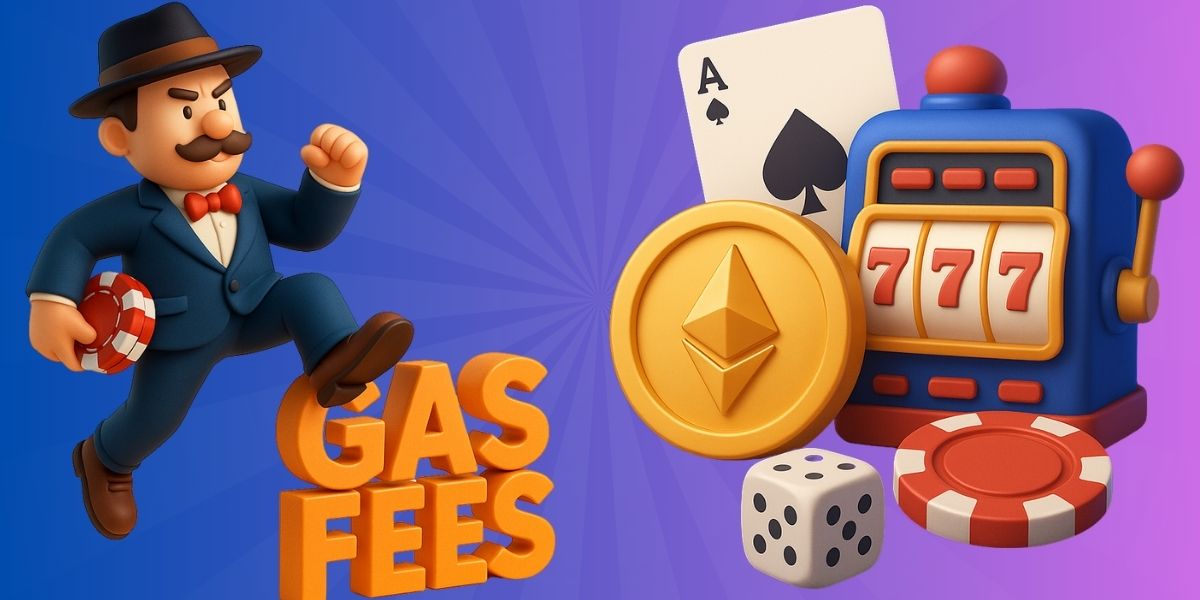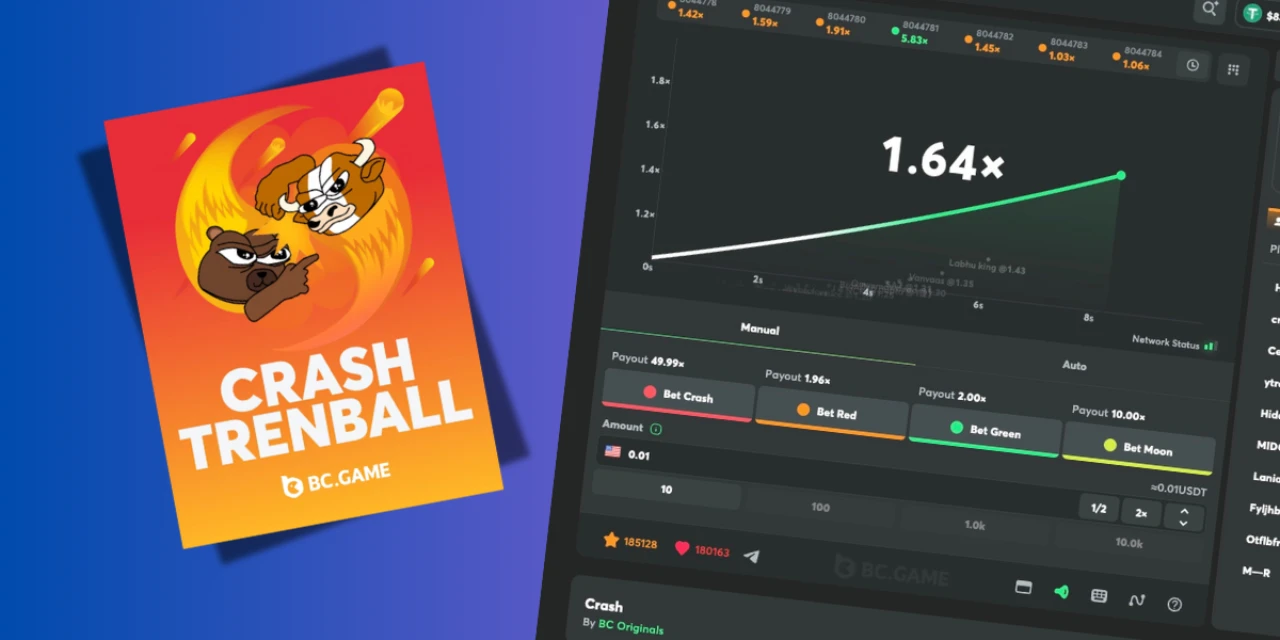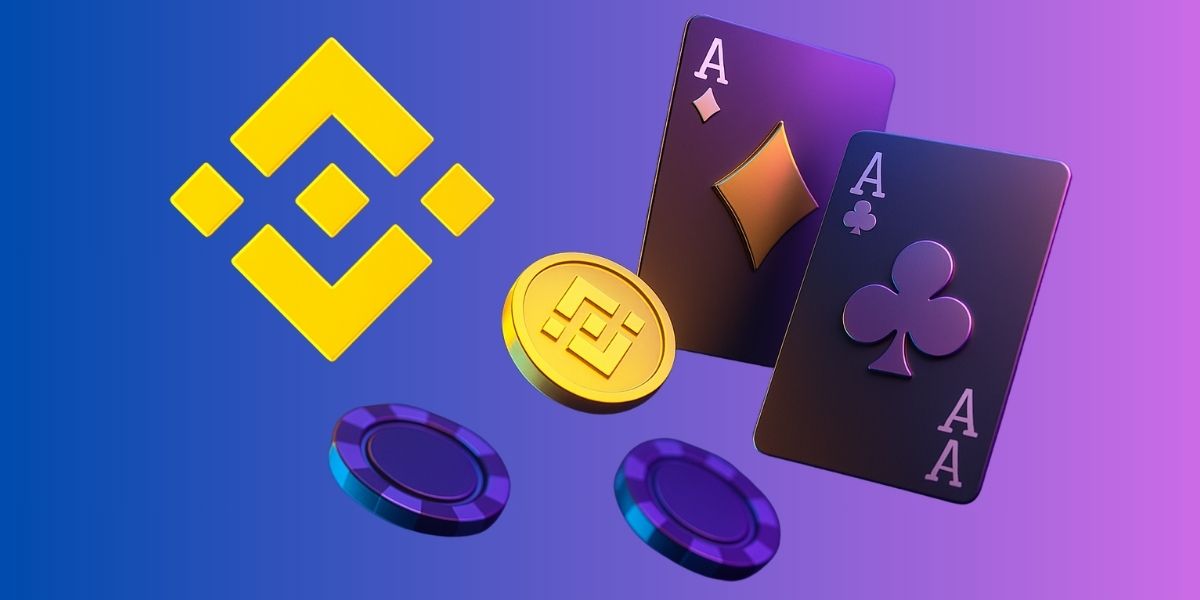
How to manage your casino bankroll like a pro?
Managing your casino bankroll is the single most important skill you should develop as a gambler.
You might already have a favorite betting strategy, but without solid bankroll management when betting with Bitcoin and other cryptos, you’ll deplete your funds faster than you can say “all in.”
In this guide, I’ll take you through the essentials of bankroll management, introduce the Kelly Criterion (a strategy for betting smart), and test it in action.
What is bankroll management?
Bankroll management is all about controlling how much you bet so you can play longer and reduce the risk of losing everything in one unlucky streak.
No matter what game you’re playing, it’s crucial to plan your budget and stick to it.
Why? Because gambling is unpredictable. Even games with a 50/50 chance can turn into losing streaks. Good bankroll management helps you:
- Avoid impulsive, risky bets.
- Keep the game fun instead of stressful.
- Stretch your bankroll for longer sessions.
Bankroll management basics
Now that you’ve got the gist of it, let’s go over the basics of managing your gambling bankroll effectively:
1. Set a budget
Decide on a fixed amount you’re willing to lose before you start gambling. Think of it as entertainment money, like buying a movie ticket—you’re paying for the experience, not guaranteed winnings.
2. Break it down
Divide your bankroll into smaller units. For example, if you have $100, you might break it into 100 bets of $1 each. This helps prevent big losses in a single round.
3. Set win and loss limits
Decide when to stop playing, whether you’re on a losing streak or hitting a profit goal.
Some casinos, like Stake, have excellent responsible gambling toolkits that make setting loss and win limits easy.
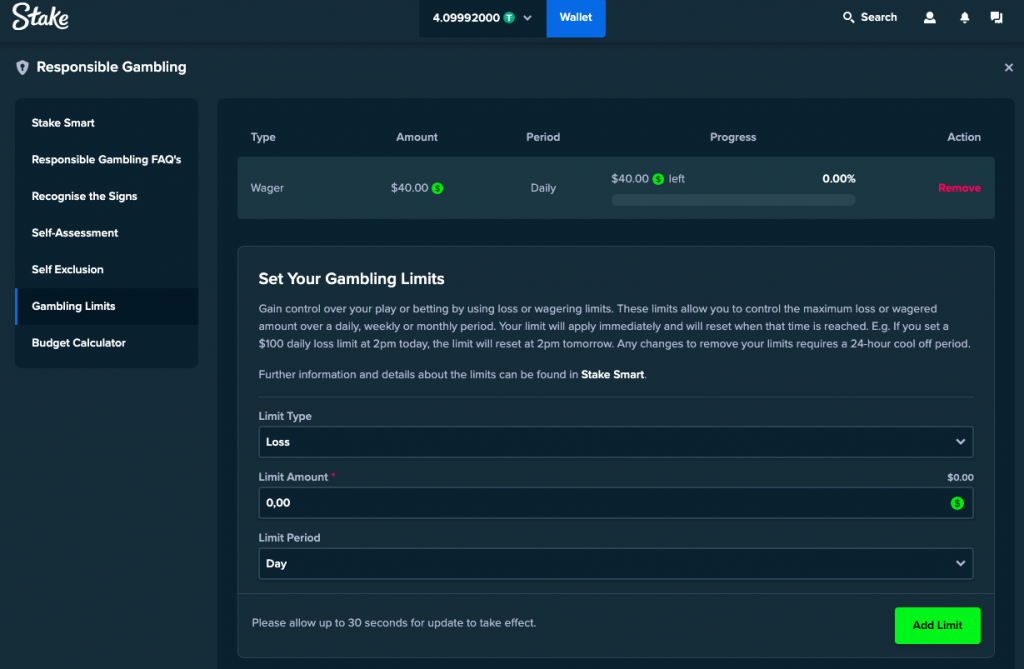
4. Don’t chase losses
It’s tempting to double down after a loss, but that can spiral out of control quickly (hello, Martingale strategy). Stick to your plan and move on if luck isn’t on your side.
5. Use conservative strategies
If you insist on using a betting strategy, opt for low-risk and conservative strategies, such as Oscar’s Grind or—even better—Kelly Criterion.
What is the Kelly Criterion?
The Kelly Criterion is a mathematical formula that can help you decide how much of your bankroll to bet on each round.
Developed in the 1950s by John Kelly, the premise is simple: maximize profits and minimize the risk of going bust.
The formula looks like this:
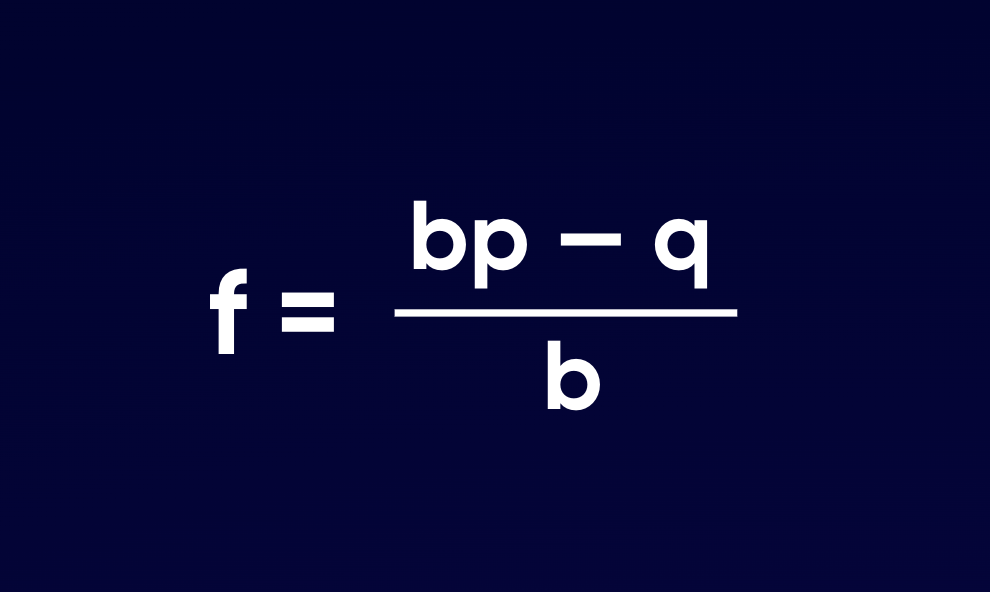
- f = fraction of your bankroll to bet.
- b = decimal odds minus 1 (eg., if the odds are 1.98, b=0.98b)
- p = probability of winning.
- q = probability of losing (calculated 1 – p)
In simple terms, the Kelly Criterion tells you how much to bet based on your chances of winning and the potential payout.
Not sure about the calculations? That’s fine. You can use a Kelly Criterion calculator to make things simpler.
Testing the Kelly Criterion on BC.Game’s CoinFlip
Now, let’s see how the Kelly Criterion works in action. I tested the strategy on BC.Game’s CoinFlip, a straightforward game where you bet on heads or tails with a 50/50 chance of winning.
About CoinFlip
CoinFlip is exactly what it sounds like: a virtual coin toss. You choose heads or tails, place your bet, and see if your prediction is correct. The game offers a multiplier of 1.98x, meaning a winning $1 bet pays $1.98.
Working out my formula
With a 50% chance of winning and odds of 1.98x, here’s how I calculated the formula for my CoinFlip session:
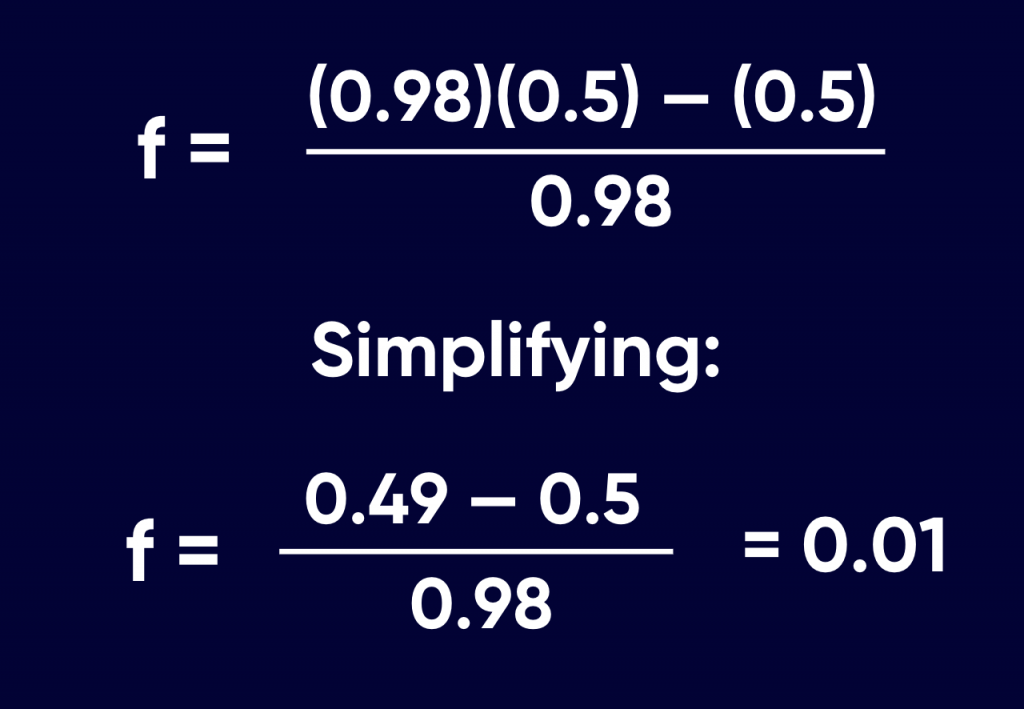
The result suggested I bet 1% of my bankroll per flip. This is conservative, yes, but keeps the risk low.
My test parameters
- Starting Bankroll: $50.
- Initial Bet: $0.50 (1% of bankroll).
- Game Plan: Adjust the bet size after each flip based on the remaining bankroll.
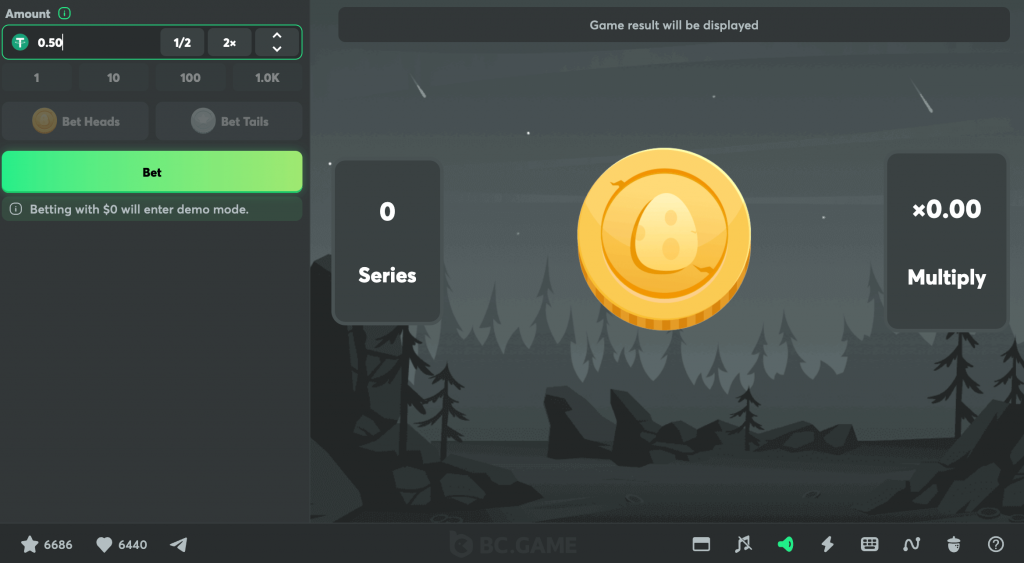
The test: My CoinFlip session
I tested the strategy over 20 flips, and I’ll share some of the results
| Flip # | Bet Size | Outcome | Bankroll after bet |
|---|---|---|---|
|
Flip # 1 |
0.50 |
Loss |
49.50 |
|
Flip # 2 |
0.49 |
Win |
50.47 |
|
Flip # 3 |
0.51 |
Win |
51.47 |
|
Flip # 4 |
0.53 |
Loss |
52.75 |
|
Flip # 20 |
Win |
After 20 flips, I ended with a bankroll of $52.75, a small but undeniable gain. I got to have fun in the process without losing too much, too. The Kelly Criterion kept my bets small, even during losses, preventing any significant hits to my bankroll.
Obviously, this strategy isn’t going to make you thousands in one go, but the old adage “slow and steady wins the race” is very relevant here.
Kelly Criterion Pros and Cons
Turns out the Kelly Criterion was a reliable way to manage my bets, even in a simple game like CoinFlip. Here’s what I learned about the strategy:
Pros
- Discipline: It forces you to stick to a calculated plan.
- Bankroll protection: Betting small fractions keeps losses manageable.
- Steady growth: Gains are slow but sustainable.
Cons
❌ Requires accurate probabilities: The formula assumes you know your exact chances of winning, which isn’t always possible in complex games. Slots bankroll management, for example, is much more challenging.
❌ Very conservative: It might not be appealing if you’re looking for big, fast wins.
Different approaches to bankroll management
Below are three well-known bankroll money management systems we like to use when crash gambling.
Flat betting model
If you want to play it safe, flat betting is the way to go. This approach to responsible bankroll management is based on the principle of placing the same bet amount each time.
It disregards the odds, previous outcomes, emotions and temptations. No matter the situation, you place the same bets in every round. Once you decide on a bet amount, you stick to it religiously.
Bet in units not in $!
If you deposit $100, we recommend you determine something called “wagering units”.
Wagering units are simply a percentage of your total bankroll. With a $100 deposit, a safe wagering unit would be $1. Instead of thinking in terms of Dollars, think in terms of units.
This will allow you to track your progress without being burdened by Dollars, you shift your mind to units. Talking in units also helps you communicate your progress to your friends, it takes away the bragging element and feelings of inadequacy if you’re playing with someone with a much bigger bankroll.
💡 1 Unit might be $1 or $10, but it doesn’t matter, it’s still a unit and nothing more!
With a flat betting bankroll management model, you would place 1 unit each time. No matter the situation, stick to that 1 unit and see them accumulate!
Percentage-based betting model
The percentage model is perhaps our favorite since it allows us to scale our bets based on our success rate.
With the percentage-based bankroll management model, you first decide on a percentage of your total bankroll that is gonna represent your base bet amount.
Let’s say you deposit $100, a 1% or a $1 base bet amount would be considered as safe. However, some players tend to go up to 5% for their base bet.
Compared to the flat betting model, the bet amount here is not fixed. It fluctuates based on your progress. Here’s an example.
Total bankroll: $1000
Chosen base bet amount: 1% ($10)
You place a $10 bet in your favorite crash game and cash out at 2X!
Win scenario: Your total bankroll is now $1020, and your base bet amount is now $10,20
Loss scenario: Your total bankroll is now $990, and your base bet amount is now $9,90
💡 This approach does mean you’ll need to sharpen up your math skills or be quick with a calculator.
If that isn’t something you’re particularly happy about, you can also play games like Crash by Stake Originals or Crash by Roobet, which allow you to modify your base bet amount by a certain percentage after a loss or a win.
Confidence and data-based betting
We’re slowly but surely increasing the risk level with each new bankroll management strategy we showcase. If flat betting was the safest, then this approach is the least safe. However, it’s still based on logic and data.
💡 Confidence-based bankroll management is based on assigning risk levels to the possible outcomes.
Cashing out at 1.10X is statistically safer than cashing out at 2X. Based on this data, one could be more confident in placing a bigger bet on a lower multiplier.
Here is an example of how we defined our risk levels and the bet amounts we assign to each level.
| Payout Multiplier | Risk Level | Bet Amount |
|---|---|---|
| 1,0X – 1,20X | 1 | 1,6 Unit |
| 1,20X – 1,30X | 2 | 1,4 Unit |
| 1,30X – 1,50X | 3 | 1,2 Unit |
| 1,50X – 1,70X | 4 | 1 Unit |
| 1,70X – 2,0X | 5 | 0,8 Unit |
| 2,0X – 2,50X | 6 | 0,6 Unit |
| 2,50X – 3,0X | 7 | 0,4 Unit |
| 3,0X + | 8 | 0,2 Unit |
Check out our guide to crash gambling odds to see how we came up with the table above, but that’s not the only way you can safely determine your risk or confidence levels.
Experts like us know that games like Crash by BC Originals feature history analysis tools that allow you to determine your odds of winning by analyzing the past 2000 rounds of crash. Watch the video below to see how to use that tool!
Bankroll management tips
Whether you decide to use Kelly Criterion or not, here are some tips that should help you keep your bankroll intact when you’re playing at crypto casinos:
- Play low-stakes games: Maybe not as exciting as their high-stakes counterparts, but low-stakes games (and small bets within those games) mean you can player for longer.
- Set time limits: Set yourself some time limits and stick to them. I’d recommend keeping your playing sessions under one hour.
- Keep perspective: Look at gambling as a means of entertainment, and not a way to make a profit.
Final thoughts
Bankroll management is about more than just numbers—it’s about staying in control and keeping gambling fun. The Kelly Criterion is a great tool if you want to practice discipline, as it balances risk and reward effectively.
So, the next time you’re placing a bet, remember: manage your bankroll, and you’ll enjoy the game without breaking the bank.




